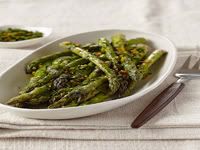Nowadays, coleslaw has migrated from the Eastern bloc to take its place on the American picnic table alongside hot dogs and apple pie. Delis ubiquitously serve the stuff in a little ramekin with sandwiches. We rarely give the cabbage concoction a second thought to its origins or nutritional benefits—but we should.
Cabbage has a long, hearty, and healthy history. For centuries, Russian peasants sustained themselves through some of the most bitter-cold winters on the planet by eating this leafy vegetable and not much else. That says something about the nutritional value, da? Cabbage (especially the red variety) is a surprisingly excellent source of vitamin C, which some experts believe may reduce the risk of getting diabetes. And because it’s a cruciferous vegetable like its cousins, broccoli and Brussels sprouts, it contains potent anti-cancer properties. One study found that women who ate the most cabbage had a 45 percent lower breast cancer risk than women who ate the least! Red cabbage offers another bonus: It’s rich in natural pigments that may help boost insulin production and lower blood-sugar levels.
With all that nutritional value, you’d think there’d be a catch. There’s not. To boot, cabbage is very low in calories (only 16 calories per one-half cup cooked!) and is a good source of fiber at 1.7 grams per one-half cup. Together, these two attributes spell weight loss, which almost always benefits blood sugar. Add to that the fact that cabbage is way low on the glycemic index scale, and you’ve got true magic for a blood-sugar food. Those Russian peasants were living on a rich diet after all! The one caveat with coleslaw is the potential for glopping on too much mayonnaise. Small, mayonnaise-laden portions, like those served with the deli’s pastrami, are okay. Just halve that sandwich to keep your calories in check. Healthier coleslaw is made with a vinegar base, which helps lower the glycemic value of your whole meal. Try making no-mayonnaise coleslaw—the combination of the fiber and vinegar to lower your glycemic load, and the minimal calories of the cabbage means your portion size can be the sky’s limit.
Another serving suggestion: Sauté cabbage and onions, or braise red cabbage with chopped apples, along with red wine for two amazingly tasty and low-cal side dishes. Add sliced cabbage to soups and stews, and try thinly shredded cabbage for a delightfully crunchy bite anywhere you’d use shredded lettuce, like on burgers or tacos.
Featured Recipe
 Roasted Asparagus with Orange Gremolata
Roasted Asparagus with Orange Gremolata Go beyond simply steaming asparagus and class up this traditional side dish veggie with a little taste of citrus and garlic. Even better: Adding this haute cuisine twist to your dinner menu only takes about 15 minutes.
Ingredients:
1 bunch asparagus, trimmed
1 tablespoon extra-virgin olive oil
¼ teaspoon freshly ground black pepper
¼ cup loosely packed flat parsley leaves and tender stems
1 strip orange zest
1 clove garlic
1 bunch asparagus, trimmed
1 tablespoon extra-virgin olive oil
¼ teaspoon freshly ground black pepper
¼ cup loosely packed flat parsley leaves and tender stems
1 strip orange zest
1 clove garlic
Preparation:
1 Preheat oven to 400°F. Coat a jellyroll pan or shallow baking dish with non-stick cooking spray.
2 Spread the asparagus in the pan. Drizzle with the oil and sprinkle with the pepper. Roast until the asparagus is tender, about 15 minutes.
3 On a cutting board, finely chop the parsley, orange zest, and garlic together. Sprinkle over the asparagus before serving.
Per serving: 61 calories, 4 g fat (1 g sat), 6 g carbs, 3 g protein, 3 g fiber, 0 mg chol, 3 mg sodium, 45 mg calcium
Great Ideas
1 Preheat oven to 400°F. Coat a jellyroll pan or shallow baking dish with non-stick cooking spray.
2 Spread the asparagus in the pan. Drizzle with the oil and sprinkle with the pepper. Roast until the asparagus is tender, about 15 minutes.
3 On a cutting board, finely chop the parsley, orange zest, and garlic together. Sprinkle over the asparagus before serving.
Per serving: 61 calories, 4 g fat (1 g sat), 6 g carbs, 3 g protein, 3 g fiber, 0 mg chol, 3 mg sodium, 45 mg calcium
Great Ideas
Every Step Counts-So Start Counting!
Here’s a quick question: How many steps do you take during a day? Don’t know? It’s a good idea to find out by clipping on a pedometer. The average healthy person should take about 10,000 steps per day. Simply knowing that you’re counting will make you more conscious of your activity level. You’ll also have a benchmark to chart progress. Plus, all those steps lead down a road of healthy benefits. Walking is a low-impact, no-gear-required way to shed weight and improve heart health. Here are a few tips to get the most out of your pedometer:
• Clip it on when you get out of bed, and leave it on until you go to sleep.
• Use it for a few days to get your baseline average of steps.
• Make it your goal to add 5,000 steps a day to your baseline.
• Don’t want to invest in an actual pedometer? Download a pedometer application for iPhone, Blackberry or other smart phones.
• Clip it on when you get out of bed, and leave it on until you go to sleep.
• Use it for a few days to get your baseline average of steps.
• Make it your goal to add 5,000 steps a day to your baseline.
• Don’t want to invest in an actual pedometer? Download a pedometer application for iPhone, Blackberry or other smart phones.

Thanks for posting! Your research on the origins of cole slaw is a bit off. It was brought to the US by the Dutch who settled New Amsterdam in the 1600s. Cole Slaw comes from the Dutch “cabbage salad” or “koolsla”...not Eastern Europe!
ReplyDelete